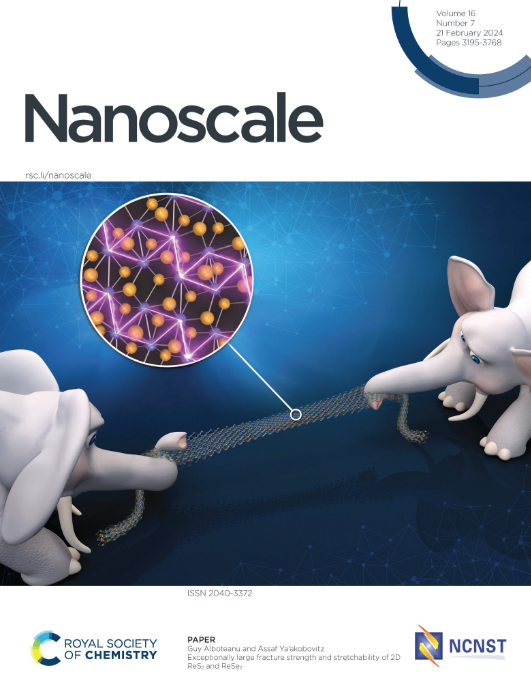Laser-assisted Thermoelectric Hydrogen Peroxide Biosensor Based on Ag2Se Nanofilms for Sensitive Detection of Bacterial Pathogens
IF 5.8
3区 材料科学
Q1 CHEMISTRY, MULTIDISCIPLINARY
引用次数: 0
Abstract
Thermoelectric (TE) materials can convert the heat produced during biochemical reactions into electrical signals, enabling the self-powered detection of biomarkers. In this work, we design and fabricate a simple Ag2Se nanofilms-based TE biosensor to precisely quantify hydrogen peroxide (H2O2) levels in liquid samples. A chemical reaction involving horseradish peroxidase, ABTS and H2O2 in the specimens produces a photothermal agent—ABTS (2,2′-azino-bis(3-ethylbenzothiazoline-6-sulfonic acid) free radical, which triggers the heat fluctuations at the TE sensor through the photo-thermal effect, eventually enabling the sensing of H2O2. Consequently, the constructed sensor can achieve a detection limit of 0.26 μM by a three-leg TE device design. Further investigations suggest that the application of our TE sensor can be extended in testing H2O2 in beverages (including milk, soda water, and lemonade) and evaluating the load of bacteria pathogens relevant to dental diseases and infections including Streptococcus sanguinis and Methicillin-resistant Staphylococcus aureus with high analytical accuracy. This strategy utilizes the combination of high thermoelectric performance with chemical reactions to realize a straightforward and accurate biomarker detection method, making it suitable for applications in medical diagnostics, personalized health monitoring, and the food industry.求助全文
约1分钟内获得全文
求助全文
来源期刊

Nanoscale
CHEMISTRY, MULTIDISCIPLINARY-NANOSCIENCE & NANOTECHNOLOGY
CiteScore
12.10
自引率
3.00%
发文量
1628
审稿时长
1.6 months
期刊介绍:
Nanoscale is a high-impact international journal, publishing high-quality research across nanoscience and nanotechnology. Nanoscale publishes a full mix of research articles on experimental and theoretical work, including reviews, communications, and full papers.Highly interdisciplinary, this journal appeals to scientists, researchers and professionals interested in nanoscience and nanotechnology, quantum materials and quantum technology, including the areas of physics, chemistry, biology, medicine, materials, energy/environment, information technology, detection science, healthcare and drug discovery, and electronics.
 求助内容:
求助内容: 应助结果提醒方式:
应助结果提醒方式:


